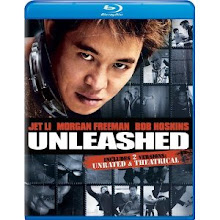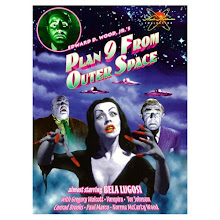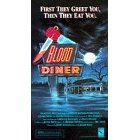by Jason Pyles
Quentin Tarantino’s two “Kill Bill” films have an undeniable video game quality. This is not uncommon in modern action films, but these two examples are special because each one has a different video game emphasis. In “Vol. 1,” Uma Thurman’s The Bride character slices and dices numerous victims — many of them nameless, faceless blanks. Gamers are accustomed to mowing down hundreds of place-holders, such as these.
“Vol. 2” — as well as the two films collectively — illustrates the way one must progressively climb the ladder of “bosses,” having prerequisite, episodic showdowns that must be won in order to face the biggest boss at a long-awaited finale. I love that.
Of course, I don’t think it was necessarily Tarantino’s objective to bring a Double Dragon-like video game to the screen. No, according to the Making of “Kill Bill” short film that accompanies the DVD with “Vol. 1,” while QT was filming “Pulp Fiction,” he and Thurman came up with the concept of this Bride character as a woman-scorned, revenge flick. In addition, as he is wont to do, QT also intended to draw upon his vast knowledge of the Kung Fu film genre to weave an amalgam of Hong Kong cinema, ‘70s grindhouse cinema, exploitation cinema, samurai films and the spaghetti western.
The more one knows about these various genres, the more one will appreciate what QT has done with his “Kill Bill” creation. I don’t claim to be an expert on any of these genres; however, I do know a thing or two about martial arts films, which enhanced my appreciation for “Vol. 2” specifically.
The concept of having a vendetta — especially one that could develop within a young person whose loved one(s) has been slain — is a prominent martial arts film theme. Spoilers ahead: Knowing that we were watching a Tarantino film, there was no doubt that Copperhead’s little girl was going to witness her demise. And following the genre, The Bride tells the kid to come find her when she’s older if she’s still sore about her mother’s death.
Another common martial arts theme is having foes who are specially trained with one, unconventional weapon, just as GoGo is with her chain mace.
Perhaps the most prevalent martial arts film theme is the student’s unconventional training by a superhumanly powerful master teacher. Accordingly, The Bride learns the mysteries of Kung Fu under the cruel tutelage of Pai Mei. Now, this sequence cashes in — thrice — on the screenwriter’s technique of set-up and pay-off, which is where information planted earlier in the film comes back around later. Also, I would note, there is something in The Bride’s education relevant to battling each of her three foes in “Vol. 2.”
The Bride’s training of being able to punch through wood from only three inches away addresses her escape from Bud’s seeming death sentence. (This sequence, by the way, is masterful: The way the screen ratio claustrophobically changes while she’s in the coffin, as well as the initial pitch blackness with incredibly haunting sound effects of shoveled dirt, constitutes the film’s most effective — and affecting — portion.) And naturally, the way The Bride plucked the eyeball (Elle Driver) and the superb execution of the five-point-palm exploding heart technique (Bill) were also set up during The Bride’s training. Because it was a set-up and pay-off scenario, I wasn’t disappointed with this seemingly anti-climactic, fatal blow: Again, and maybe this convention comes more from martial arts video games than films, but it is common for a martial artist to have one finishing technique, ie., Daniel Larusso’s Crane Kick in “The Karate Kid.” Finishing moves are a big deal when you’re a Kung Fu master.
Just a quick actors’ note: Michael Parks, who plays his usual character Earl “Pops” McGraw in “Vol. 1” and then Esteban in “Vol. 2,” is one of my favorite character actors. He was also in the exceptional introductory sequence of “From Dusk Till Dawn.” I wish that guy had also been squeezed into “No Country for Old Men.” Anyway, he’s a dynamic actor who’s worth mentioning. Also worth noting is Daryl Hannah’s passable performance: After seeing her execution of her role in “Wall Street” (1987), I seriously had my doubts about her acting abilities. (A quick check at the IMDb.com reveals that she won a Razzie Award for that role, as well as for two other performances.) In any case, I liked her in these films.
Though they inspire much discussion, the “Kill Bill” films are two of those rare motion pictures that are difficult to describe because they speak for themselves. I feel that way about “Mysterious Skin,” too. I realize that I’ve likely contributed very little above to the pages and pages of writing about the “Kill Bill” films. They combine to form so rich a work, that it’s a challenge to write commentary beyond scenes I admired.
I will agree with Andy’s post below that the second film is slower, but it also features better storytelling. (It probably doesn’t help that it’s about 44 minutes longer than the first film.) Nevertheless, I found it engaging upon my first viewing, which this was. That brings me to Andy’s point: This was Andy’s second viewing, and I could see where these films would not hold up us well with subsequent viewings. After we’ve already learned the tricks of the narrative, we’re left with video-game violence and lengthy dialogue, which is still intriguing, but not the way it is in, say, “Pulp Fiction” or “Reservoir Dogs.”
As for Tarantino’s purpose in slicing “Kill Bill” in two (and it looks like three, slated for 2014), I’m sure there are official answers for this, but my speculation would be that this is an example of a notably extravagant filmmaker who has indulged himself in the work of constructing an epic.






























































1 comment:
Jason - I totally agree with your post. My point, and I did a horrible job writing it, was that the fight scenes were far too slow. Yes, I think that the 5 finger death blow was a perfect way to kill Bill, but why not some intense fighting before?
Post a Comment